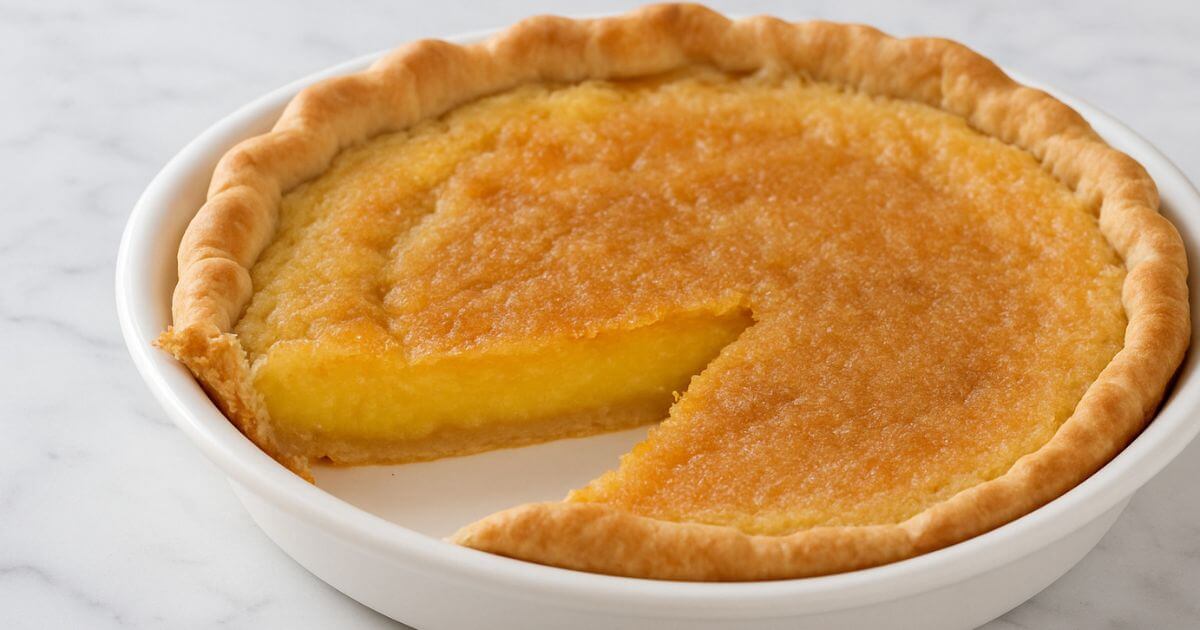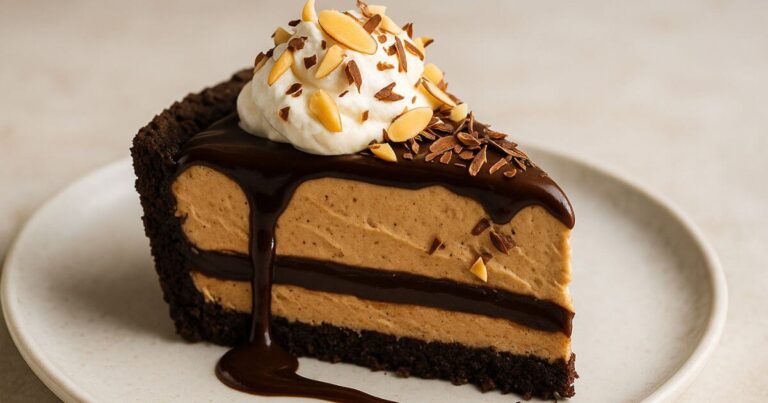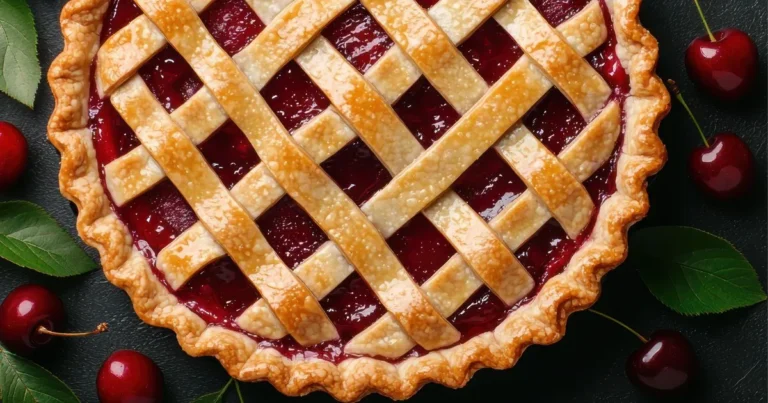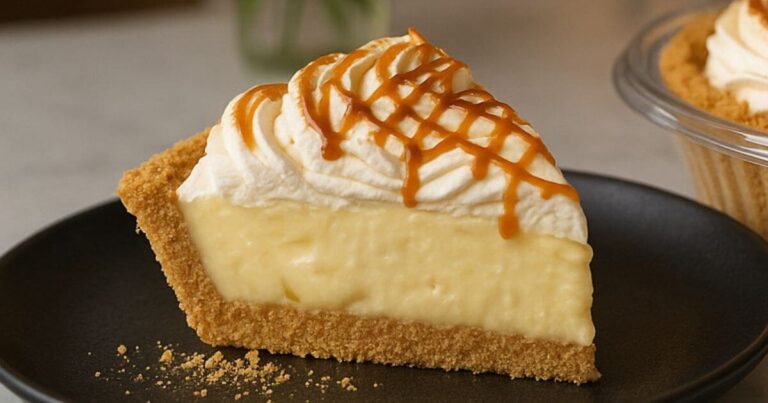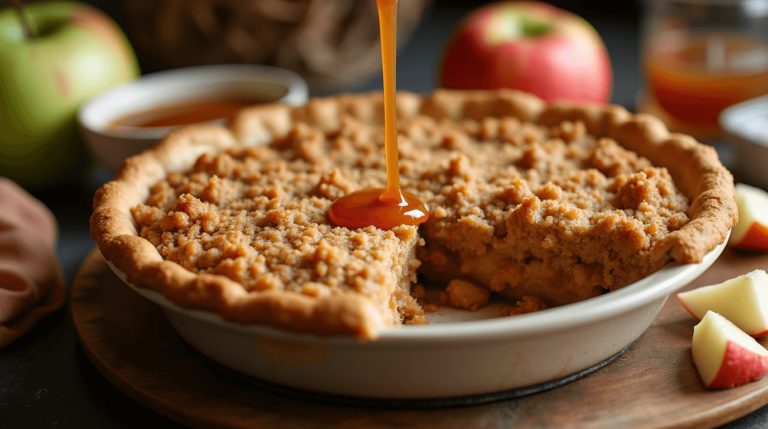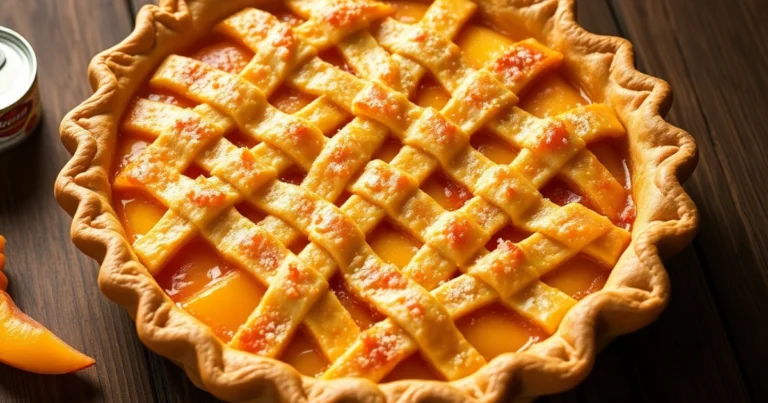Orange Buttermilk Chess Pie: Why It’s the Best Spring Dessert
Picture this: it’s Sunday afternoon, and you’re craving something sweet but don’t want to spend hours in the kitchen. Enter the game-changer that transformed my dessert routine – a simple yet extraordinary Orange Buttermilk Chess Pie that tastes like sunshine captured in pastry.
This Southern classic gets a bright makeover with fresh orange and tangy buttermilk. The result? A dessert that’s quick to make, budget-friendly, and delivers restaurant-quality results every time.
Let’s explore how to create this golden masterpiece that’ll have everyone asking for seconds.
Table of Contents
Essential Ingredients For Orange Buttermilk Chess Pie
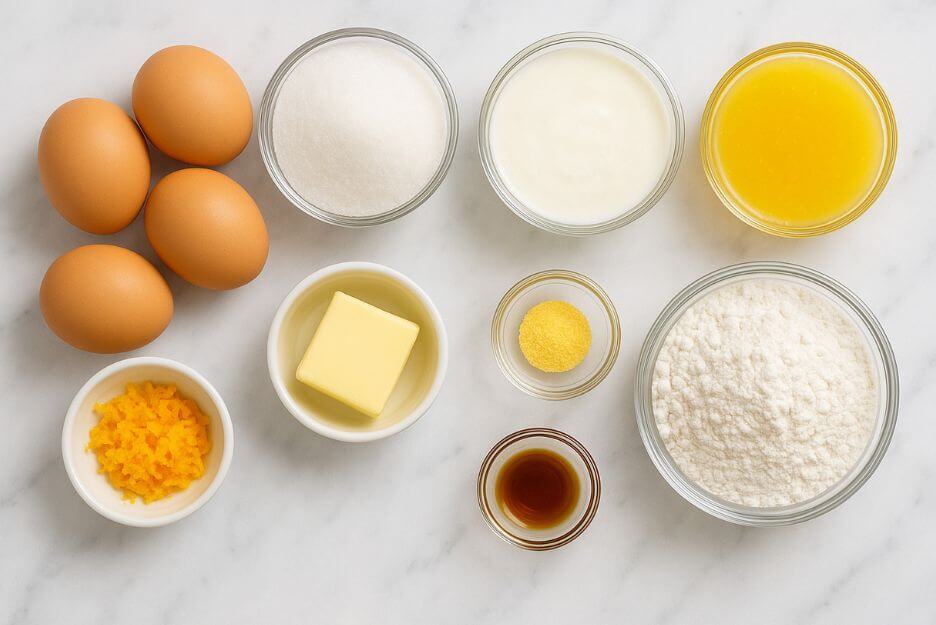
Pastry Foundation:
- 1 unbaked 9-inch pie shell (homemade or store-purchased)
- Alternative: 1¼ cups flour, ½ tsp salt, ⅓ cup chilled butter, 3-4 tbsp ice water
Citrus-Buttermilk Base:
- 4 whole eggs, brought to room temperature
- 1½ cups white sugar
- ½ cup cultured buttermilk
- ¼ cup freshly squeezed orange juice (approximately 1 medium orange)
- 2 tbsp fresh orange zest
- ¼ cup unsalted butter, melted and cooled
- 2 tbsp plain flour
- 1 tbsp yellow cornmeal (essential for texture)
- ½ tsp pure vanilla extract
- ¼ tsp fine salt
Smart Swaps:
- Missing buttermilk? Combine ½ cup milk with ½ tbsp lemon juice, wait 5 minutes
- Need dairy-free? Plant milk plus acid works perfectly
- Gluten concerns? Cup-for-cup gluten-free flour substitute
- No fresh oranges? Bottled juice works, though fresh elevates the flavor significantly
Ingredient Tips: Farm-fresh eggs create the creamiest filling. Real butter beats margarine every time – the flavor difference is remarkable.
Required Kitchen Tools
Gather these essentials before starting:
- Standard 9-inch pie dish (metal preferred for even browning)
- Two mixing bowls (one large, one medium)
- Balloon whisk
- Standard measuring tools
- Fine-mesh sieve (game-changer for smooth texture)
- Zester or small grater
- Parchment paper and pie weights (optional but helpful)
Equipment Alternatives: Regular grater works for zesting (use smallest holes). Dried rice or beans substitute for commercial pie weights perfectly.
Detailed Preparation Method
Phase 1: Oven and Crust Setup
Heat oven to 350°F (175°C). Allow refrigerated pie crust to soften for 10 minutes at room temperature – this prevents tearing during handling.
Phase 2: Crust Preparation
Press crust gently into pie dish, creating decorative edges as desired. Pierce bottom surface multiple times with fork to prevent bubbling during baking.
Phase 3: Optional Pre-Baking
Cover crust with parchment, add weights, bake 10 minutes. Remove weights and paper – this step ensures crispy bottom crust.
Phase 4: Create the Base Mixture
Whisk eggs in large bowl until completely combined but not foamy. Gradually incorporate sugar, whisking until mixture appears smooth and pale.
Phase 5: Add Liquid Components
Slowly blend in buttermilk, fresh orange juice, and zest. The zest provides intense citrus essence – don’t skip this step!
Phase 6: Final Mixture Assembly
Stir in cooled melted butter (hot butter scrambles eggs). Add flour, cornmeal, vanilla, and salt. Cornmeal creates chess pie’s signature texture.
Phase 7: Achieve Silky Smoothness
Strain entire mixture through fine mesh into second bowl. This removes lumps and creates professional-quality texture.
Phase 8: Baking Process
Pour strained filling into prepared crust. Bake 45-55 minutes until center appears set with minimal movement when gently shaken.
Phase 9: Cooling Phase
Cool completely on wire rack for minimum 2 hours. Patience here prevents messy, runny slices.
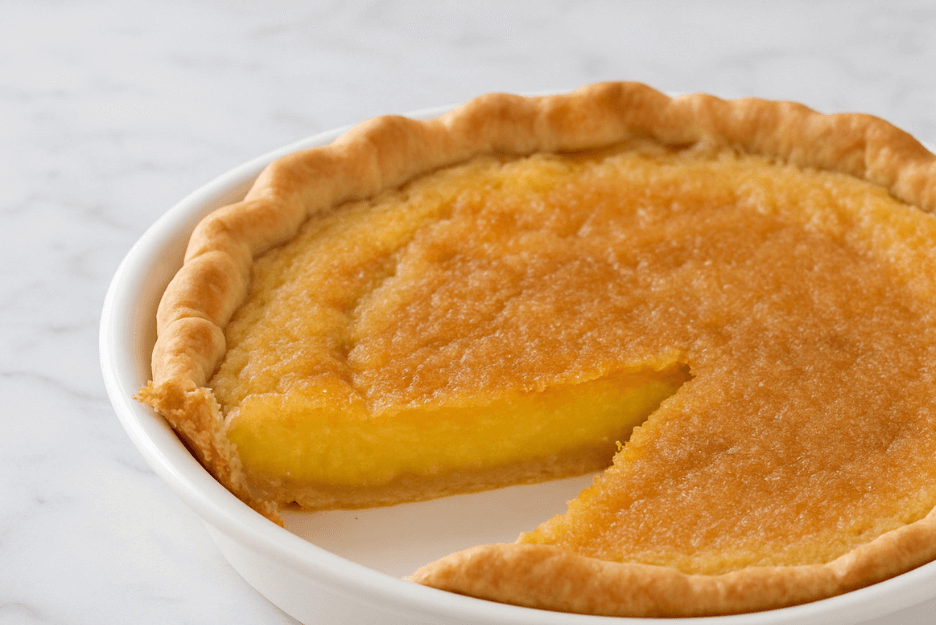
Professional Secrets and Creative Twists
Insider Techniques:
Temperature matters tremendously. Room-temperature eggs blend smoother than cold ones. Forgot to remove them early? Submerge in warm water briefly.
Avoid overbaking at all costs. Center should wiggle slightly when done. Residual heat continues cooking during cooling.
Straining transforms everything. This single step elevates homemade pie to bakery standards.
Fresh citrus makes magic happen. Bottled juice lacks the bright complexity of fresh-squeezed.
Cooling patience pays off. Hot chess pie resembles soup. Properly cooled pie slices beautifully.
Troubleshooting Common Issues:
Heavy, dense texture: Usually caused by excess flour. Measure carefully.
Grainy, unpleasant mouthfeel: Occurs when cornmeal is omitted or eggs are too cold.
Exciting Flavor Variations:
Lime-Buttermilk Version: Replace orange with lime juice and zest Tropical Twist: Add ⅓ cup toasted coconut flakes
Complete Nutritional Breakdown
Individual serving (8 total portions):
- Energy: 340 calories
- Protein content: 6 grams
- Carbohydrate total: 52 grams
- Fat content: 12 grams
- Dietary fiber: 1 gram
- Natural sugars: 45 grams
- Sodium level: 280 milligrams
Nutritional Advantages:
Eggs supply complete proteins and essential B-vitamins. Buttermilk provides beneficial probiotics supporting gut health. Fresh orange zest delivers vitamin C and powerful antioxidants.
Nutritional data represents approximations and may vary depending on specific ingredient brands.
Proper Storage and Serving Guidelines
Refrigeration Method:
Wrap loosely with food-safe covering, refrigerate up to 4 days. Flavors actually improve overnight as they meld together beautifully.
Long-term Freezing:
Double-wrap in plastic, then foil. Maintains quality frozen for 3 months maximum. Defrost overnight in refrigerator before serving.
Optimal Serving Temperature:
Delicious served chilled or at room temperature. Remove from refrigeration 20 minutes before serving for ideal texture.
Gentle Reheating: Individual slices warm nicely in 300°F oven for 5-8 minutes. Microwave creates undesirable rubbery texture.
Complementary Accompaniments
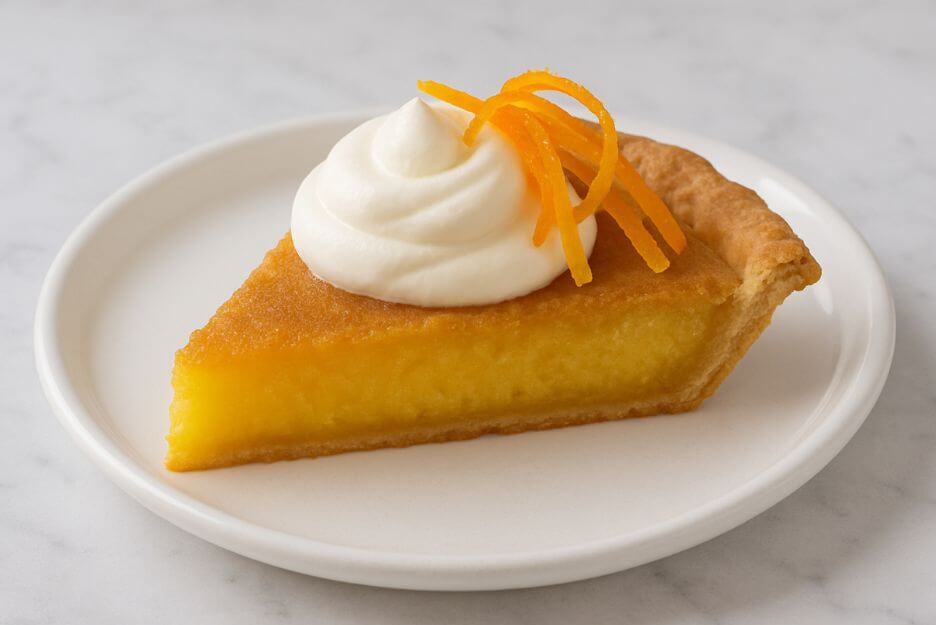
Classic Pairings:
- Freshly whipped heavy cream
- Premium vanilla bean ice cream
- Mixed seasonal berries
- Tangy Greek yogurt
- Elegant candied orange strips
Presentation Enhancement:
Light dusting of confectioner’s sugar creates elegant finish. Fresh orange twists add visual appeal for special occasions.
Beverage Harmony:
Rich coffee creates perfect flavor contrast. Fragrant Earl Grey tea complements citrus notes beautifully.
Common Questions and Expert Answers
Q: What causes filling to separate or curdle?
A: Temperature shock from cold ingredients or excessive heat. Use room-temperature eggs and moderate oven temperature.
Q: Can this orange buttermilk chess pie recipe be prepared in advance?
A: Absolutely perfect for advance preparation! Chess pie improves with overnight chilling.
Q: How do I create buttermilk substitute at home?
A: Add 1 tablespoon white vinegar to 1 cup regular milk. Allow 5 minutes for proper acidification.
Q: Why does my pie surface crack during baking?
A: Usually indicates excessive oven heat or overbaking. Reduce temperature by 25 degrees next time.
Q: Are alternative crust options acceptable?
A: Traditional pastry works best, though graham cracker crusts taste wonderful. Reduce baking time slightly.
Q: How do I recognize perfect doneness?
A: Center should appear firm but retain slight movement when pan is gently shaken.
Why This Recipe Works
This Orange Buttermilk Chess Pie succeeds because it balances simplicity with amazing flavor. The combination of tart buttermilk and fresh orange creates the perfect sweet-tangy harmony that makes each bite irresistible.
Give this recipe a try – I think you’ll find it becomes your new favorite spring dessert.

